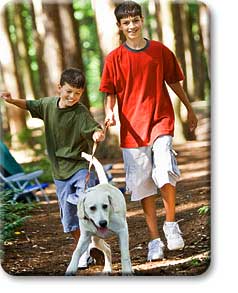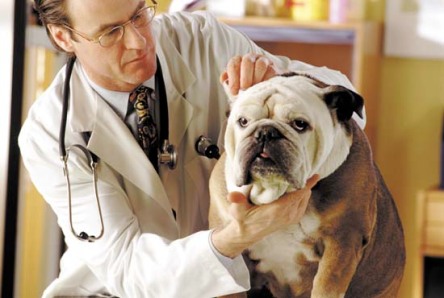There are many different types of collars and leashes and it can beEmbed from Getty Images
hard to choose what is right for you and your pet. Since each dog is unique, there are a few products that we love to recommend here at Fit N Furry! Before going out the choosing a new collar from the pet store, the best way to be sure if something is going to safe for your pet is to consult your veterinarian first.
One of our favorite collars to use at Fit ‘N’ Furry is a Martingale collar. Once originally used for greyhounds, the martingales popularity has grown in the past few years as a great alternative to chain collars or pinch collars. Once property sized and adjusted, you can take the collar on and off with ease without worrying about making sure the buckle is properly latched. While walking your pet on a martingale, if your pet is not pulling, the collar with remain loose around your pets’ neck. If your pet pulls, the collar instantly becomes tight and prevents your dog from backing out of the collar.
Another great item we use is a front lead harness. This type of harness is perfect for dogs with trachea problems or dogs that pull. There is a ring that sits on the front of your dogs’ chest and when properly used can help redirect the pulling motion without choking. These harnesses are the ones our trainer prefers to use.
If you’re having issues with a pet that is pulling and nothing has seemed to help stop the problem, you may want to look into a Gentle Leader or a Halti.Both of these sit on the bridge of your dogs’ nose and wrap around the back of the head helping guide your dog in the direction you want to go in. In a sense, it works exactly the same as a halter for a horse, keeping the pet close and under control.
There are many different leashes available, ranging from material type to length. Leashes between 4 and 6 feet in length are the most common and ideal for keeping your dog safe and keeping you in control. The majority of leashes can be found in Nylon, Cotton or Leather. Most recently we’ve noticed some pet parents starting to lean towards a bungee or shock absorbing leash. This helps take the strain off of the walker. Any leash is a good leash as long as it’s well made and has a strong clasp.
Embed from Getty ImagesThese are just some of the helpful tools you can use with your pet, but there is much more out there in the pet industry worth exploring.





 Are these jerky treats your dog’s favorite bedtime snack or
Are these jerky treats your dog’s favorite bedtime snack or 
 ous pooch
ous pooch